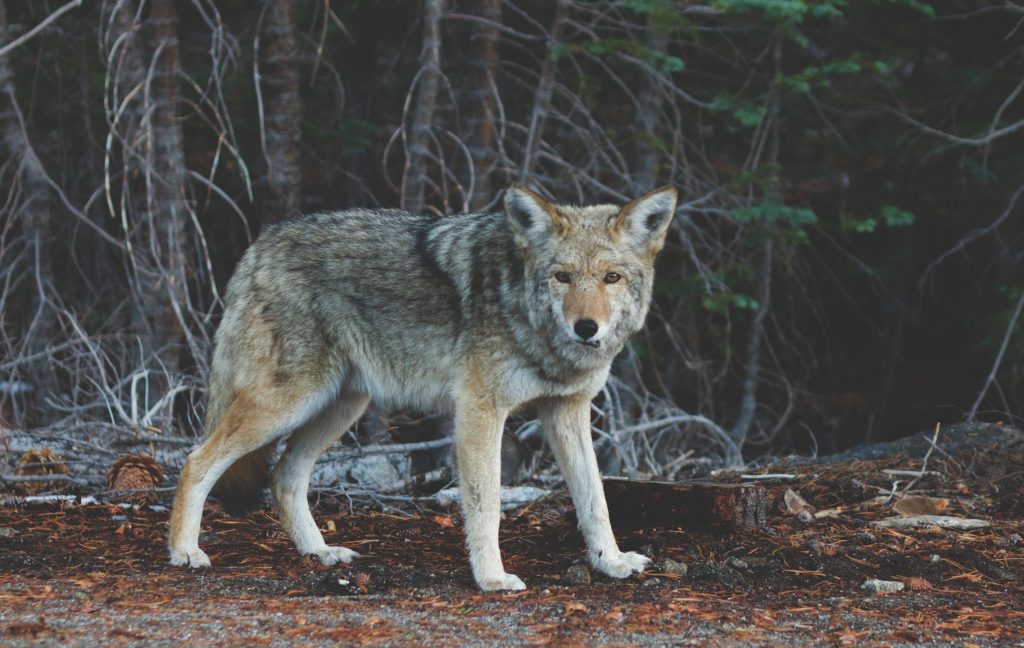 Coyote Pedagogy is a term sometimes used to describe King’s writing strategies (Margery Fee and Jane Flick). Discuss your understanding of the role of Coyote in the novel.
Coyote Pedagogy is a term sometimes used to describe King’s writing strategies (Margery Fee and Jane Flick). Discuss your understanding of the role of Coyote in the novel.
Coyote is one of my favorite characters that I have come across in Indigenous stories. I am very taken with the childish, well meaning yet accident prone character who unintentionally changes the world. I particularly love Thomas King’s short story “A Coyote Columbus Story”, in which the dreams of Coyote once again wreck havoc on the world (it only takes 3 minutes to read, so I highly recommend it). In both this story and in Green Grass Running Water, Coyote fulfills very similar roles.
First and foremost, Coyote is a creator. There’s no escaping it, he creates, therefore he is a creator. But he is certainly not the archetypal creator that many readers would imagine when they hear the term. Coyote was present ‘in the beginning’, but he wasn’t creating the world, rather he was sleeping! All that he ‘created’ was a dream, and not a very good one at that. Nevertheless, this power to create marks Coyote as important, and sets him up to act as a symbol of Indigenous Spirituality.
Coyote – as the symbol for Indigenous spirituality – is juxtaposed with the character of dog/God, who seems to be the God of the Old Testament when he says things like “What happened to my earth without form?” (King 38). It is through Coyote and dog/God that Indigenous and European ideologies are most closely compared, allowing for both the differences and similarities to stand out.
I think it is significant that Coyote enters the novel first, followed by dog/God. This simple chronology functions as an act of decolonization, reminding the reader that Indigenous cultures and beliefs were present in North America long before European settlement and colonization.
Additionally, the interaction between Coyote and dog/God seems to mimic the relationship between Indigenous Peoples and Colonizers throughout colonization (much the same as is done in “A Coyote Columbus Story”). Coyote’s story is full of confusion and misunderstandings, transitioning from welcoming to the new character to worried and wary, much as I imagine happened in real life. In this way Coyote seems to become the center point of the Indigenous – Non-Indigenous relationships about which the rest of the book circles.
More than anything though, I think Coyote – especially in the opening pages – acts as a signpost. He tells readers who aren’t familiar with Indigenous stories that this story will be different to other stories they might have read. The assumptions that many stories rest upon, that of a God who intentionally created the world, don’t hold in this story. This is a story where Coyote dreams up dog/God, where an unidentified first person narrator explains the origins of the world, and where the first man appears out of nowhere and attempts to name animals after household electronics (King 41).
This is a story where the reader needs to be comfortable being uncomfortable, and Coyote both knocks the reader off balance and welcomes him into this new world.
Works Cited
Burke, Nora B. “Building a “Canadian” Decolonization Movement: Fighting the Occupation at “Home”.” Colours of Resistance Archive. N.p., 2004. Web. 18 July 2016.
“Genesis 1, New International Version (NIV).” Read the Bible. A Free Bible on Your Phone, Tablet, and Computer. N.p., n.d. Web. 18 July 2016.
King, Thomas. “A Coyote Columbus Story.” Wishram Texts and Ethnography (n.d.): 119-27. Web. 18 July 2016.
King, Thomas. Green Grass Running Water. Toronto: Harper Collins, 1993. Print.